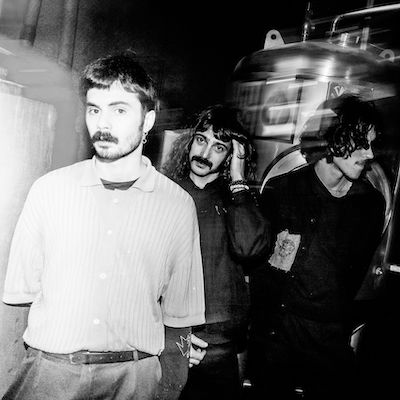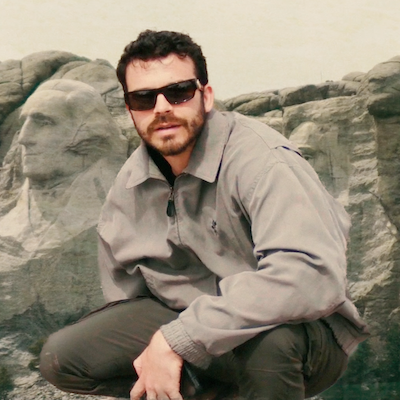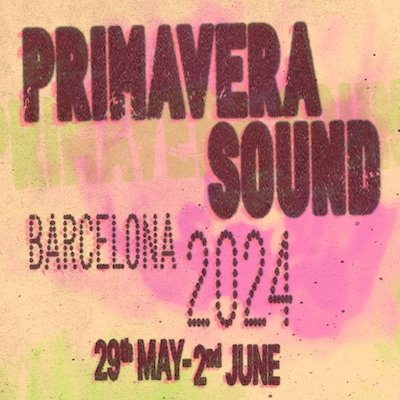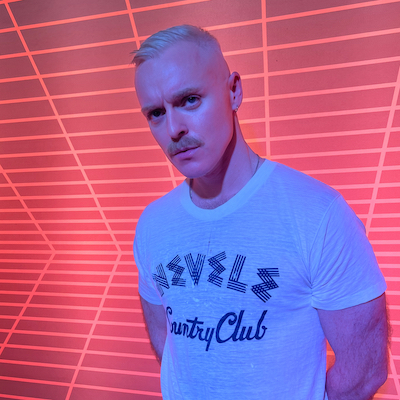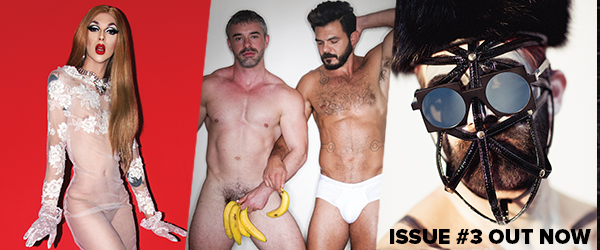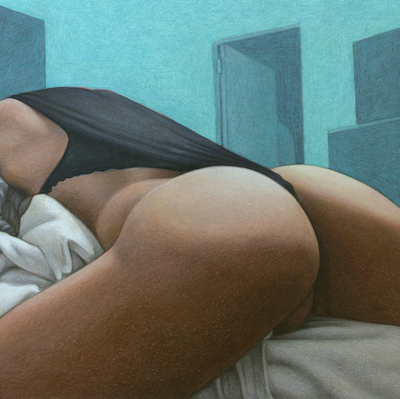
For American artist Joe Sinness, realness is the name of the game. His coloured pencil tableaux of plants, portraits, objects and ‘locked pics’ are so carefully and laboriously rendered you would swear they were photographs (even when standing in front of the drawings themselves). As with queer traditions of realness, however, Sinness often tricks the eye while captivating the viewer’s attention. For years, his drawings often employed trompe l’oeil, a visual illusion that gives the impression that what’s rendered is absolutely real. The artist spends weeks and months drawing every detail of his subjects, from bare butts and bar scenes to intricately detailed leaves and flowers. For his first solo exhibition at a museum, at the Minneapolis Institute of Art in his hometown, Sinness takes his objects of adoration and brings them out into the three dimensions of the real world. The artist sat down with Loverboy favourite, Evan Garza, recently to talk about his work…and butts.
For years, your work was focused on flora and still-life tableaux, most or all of which were coloured pencil on paper. Yet your new show at the Minneapolis Institute of Art features large scale three-dimensional objects in addition to drawings. What compelled you to begin moving into objects?
Sure – I’ve been using drawing and still lifes for about seven or eight years as a place where I can arrange a variety of disporate materials, like flowers, printed pornography elements, household objects… the still lifes act like little stages where I think queer performance can happen. A lot of times these performances or stories are about queer attraction, ways of cruising, coded language, and about how we find physical relationships.
I was thinking about how to draw the viewer into a queer space in a more direct way, and I was remembering the hokey community theatre props that we’d create for rural staged productions of musicals in my hometown. The sculptural elements represent fantasy, set design, abstracted cruising environments and they also become still lifes when grouped together in a space. I like that they’re interchangeable and may alter or enhance the reading of a drawing that’s installed nearby. A few of the props or sculptures in the exhibition are meant to be gifts or symbolic offerings to the performers that I’ve drawn.
There’s a piss trough below one of the larger drawings of a bar scene in your show. Are visitors allowed to leave you a little gift?
(Laughing) I don’t think the museum would appreciate that kind of gift! There are cameras! Although I’d be supportive of that kind of behaviour. The trough has a beautiful patina from its previous life and has not been cleaned. I also added some ‘liquid incense’ to the drains to enhance its fragrance.
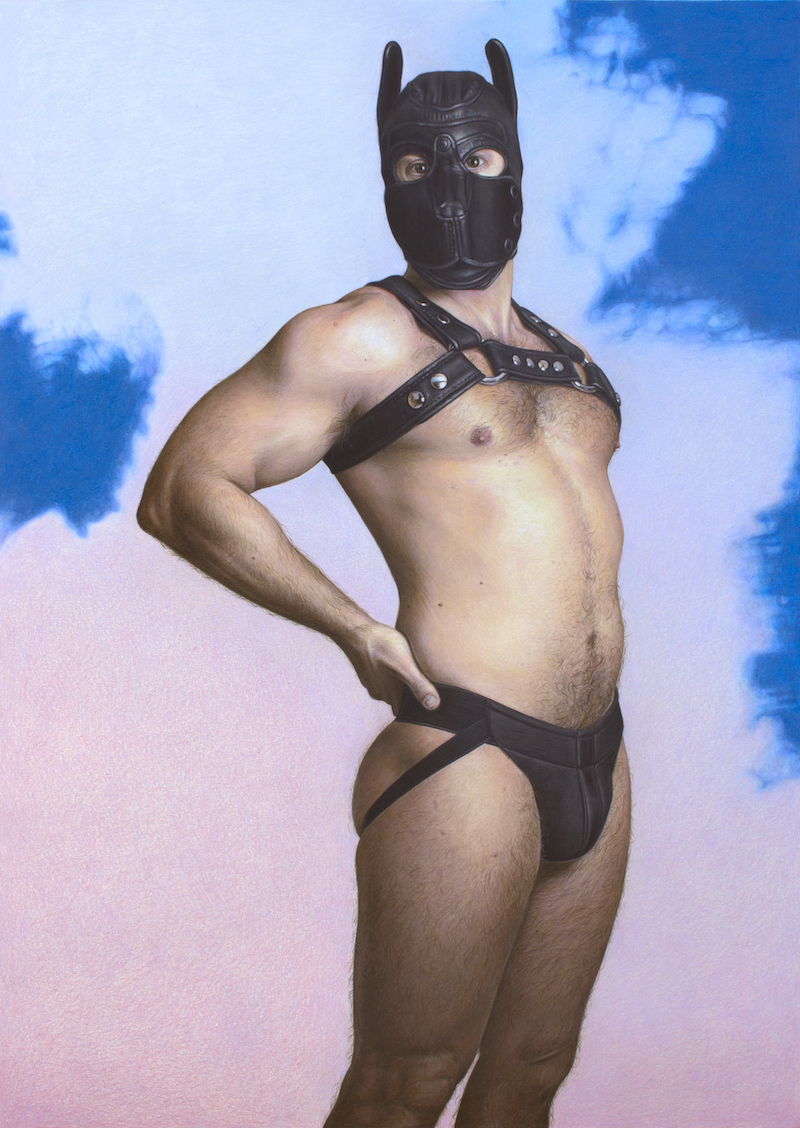 Joe Sinness, Chris (2017) coloured pencil on paper. Courtesy the artist. (c) Joe Sinness.
Joe Sinness, Chris (2017) coloured pencil on paper. Courtesy the artist. (c) Joe Sinness.
Your drawings are hyperreal in their detail, as if you’re looking at a photograph. What do you feel you’re bringing to the image that a camera doesn’t?
I always joke with photographer friends that if I were a better photographer I wouldn’t have to draw the images. I have to work from photographs because the drawing process is too long to expect any model or still life to last through it. I edit out backgrounds for my still lifes because I like for them to be floating in a kind of fantasy non-space. With this new body of portraits, I’ve really enjoyed placing my models in front of skies that I’ve taken from old Hollywood musical sound sets. I like having control over colour balance and contrast while working through the drawing process that I haven’t been able to achieve with photography.
Do you take the photographs or do you find them online? How does the internet play a role in your practice?
Yes and yes. The more traditional portraits in the show are models that I photographed in my studio. Some of the other images of ‘performers’ in the works are images that were gifted to me or taken from amateur pornography sites and from late 70’s, early 80’s studio pornography. All of the still lifes are arranged and photographed in my studio. The internet plays a role in my practice because I’ve always had a love for research – I love finding and collecting data –and uncovering connections between source material. A lot of this internet source material gets printed out and hung up in my studio – some of it stays on the walls for years before it finds itself in a still life or until I can find a visual or coded connection between it and other media.
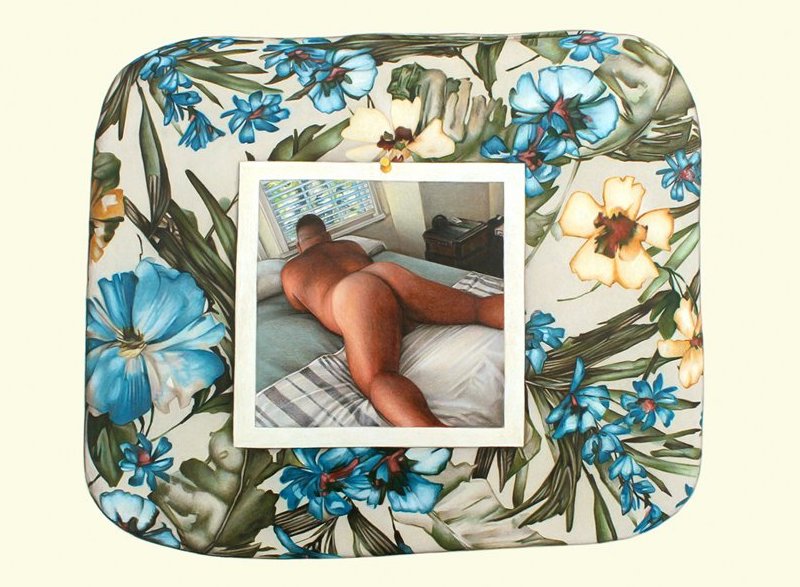 Joe Sinness, Cushion (2016) coloured pencil on paper. Courtesy the artist. (c) Joe Sinness.
Joe Sinness, Cushion (2016) coloured pencil on paper. Courtesy the artist. (c) Joe Sinness.
You like butts. I love your butts. Tell me about your love of butts.
Who doesn’t love butts?! I’ve been treating butts as I would a piece of fruit in a still life long before the peach emoji came around! Growing up, I was always curious how an exposed male butt in a movie was always displayed as a joke, but I always viewed them as highly desirable. I would rewind VHS tapes to see the two seconds of butt over and over until the tapes damn near wore out. I think it’s important to continue to reintroduce the male nude into art as desirable and sensitive and not just as a joke.
Who had your favourite movie star butt?
Of all time? It’s not fair to ask me to pick favorites… but the first name that comes to mind is Christopher Meloni, which is a very good place to start.
What kind of art were you attracted to when you were growing up in the Midwest?
My dad ran a frame shop and sold prints when I was in grade school and middle school called ‘Wings Over Water’. Most of the work he sold and displayed were prints of – try not to be shocked – photorealistic paintings of wildlife and landscapes. Some of the stuff he was interested in was kind of surrealistic. Other than that, I can’t think of much other exposure I had to art other than seeing the Sistine chapel in old National Geographics or prints of Maxfield Parrish paintings I’d see in antique shops. I was always good at copying and rendering things, but I never thought I’d have a career in the arts. It’s funny to think that I’m still copying and rendering a lot in my practice today.
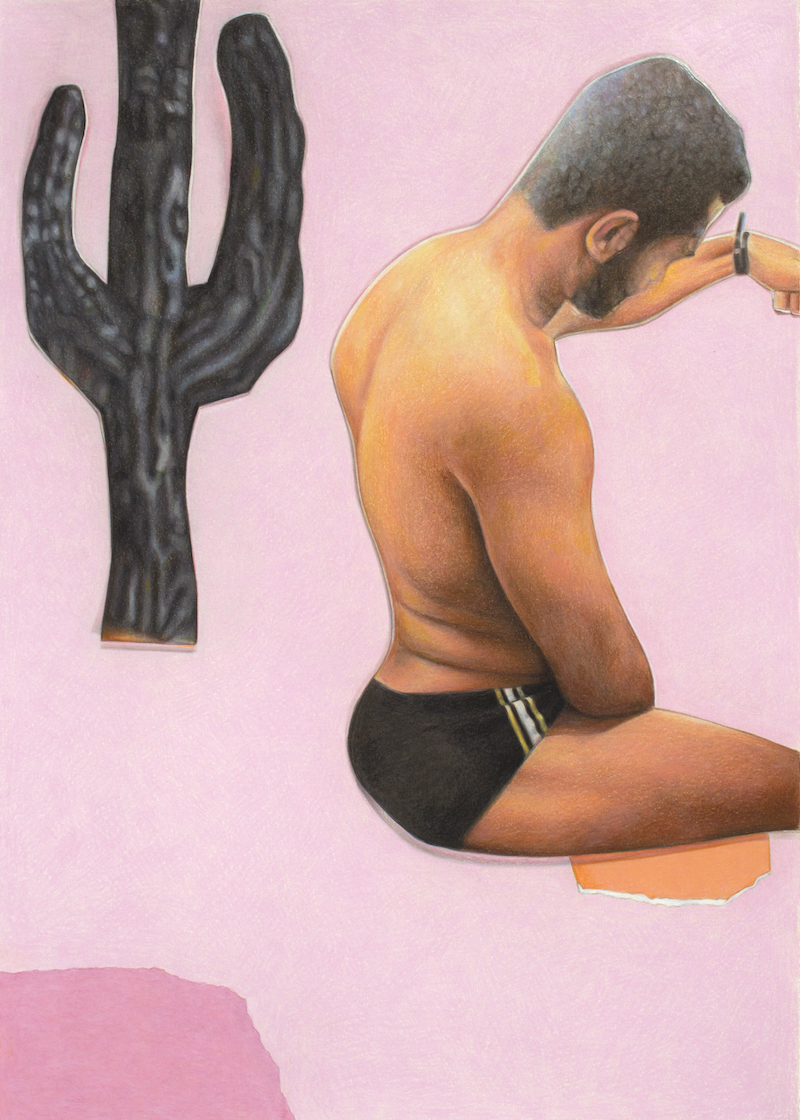 Joe Sinness, Untitled Pose 2 (2017) coloured pencil on paper. Courtesy the artist. (c) Joe Sinness.
Joe Sinness, Untitled Pose 2 (2017) coloured pencil on paper. Courtesy the artist. (c) Joe Sinness.
You and I met on Fire Island, where you found several models for your Fey series. Did your time at Fire Island Artist Residency have a noticeable impact on your practice or the queer content of your work?
I miss Fire Island! Oh, of course it had an impact. There’s nothing like getting to wake up in a fantasy queer paradise day after day. It shook me out of mental restraints that I had been imposing on myself about how I exist on a daily basis – walking, talking, dressing, interacting with others. I thought a lot about my fear of representing myself, and it helped me shake off a lot of self-imposed limitations. I’m definitely more fearless as an artist than I was prior to the experience. The residency also connected me with a larger queer family outside of the Midwest. Studio visits with artists like Jack Early and Joel Otterson were invaluable.
Lastly, and I have to ask this or my editor will kill me: What’s your favourite Mariah Carey song?
Ha! I can’t help but sing along with ‘Always be my baby’ anytime it comes on. Favourite Mariah Carey video where she poses in a giant seashell like a sea nymph, ‘My All’.
Find out more about Joe at www.joesinness.com or follow him on Instagram.



